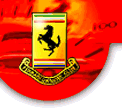  
|
Maserati Develops its Place at Ferrari
Most residents of Modena, northern Italy, know where to find the Maserati factory. "It's on Via Ciro Menotti. You'll know you're there when you see the rubble," says one.
The forecourt outside the plant looks as if it has been bombed. Small mountains of masonry and demolished brickwork mark the spot where Fiat has decided to build a new headquarters for one of the most famous names in sports car manufacturing.
Work on the site marks the latest phase of a $120m investment to revive Maserati, which has failed to make any significant profit in 30 years. In that time, the marque has clung precariously to life under a series of less-than-enthusiastic owners, including CitroŽn of France in the 1970s.
Fiat, which finally acquired the group in 1993, has now handed responsibility for turning round the company to another subsidiary boasting a motor-sport pedigree, Ferrari. Last year, Ferrari was given full control of its loss-making sibling in an inter-company transaction orchestrated by Fiat.
Given that the Italian parent had more pressing issues in carmaking - namely, how to rebuild profits from volume carmaking in Europe and finalising its strategic alliance with General Motors - Maserati was not a huge priority. But senior Ferrari executives see their newly-inherited brand as an opportunity to increase their presence in North America, the world's largest sports car market, and mount a more effective challenge to rivals such as Porsche and Mercedes.
The ageing Modena factory has been gutted and new machinery installed, and all the assembly-line workers have either been retrained or replaced. A new model, the 3200 GT, has been launched to critical acclaim.
Andrea Zappia, Ferrari's commercial director, says Maserati offers a neat solution to a nagging dilemma. Ferrari has been under pressure to exploit strong demand for its cars by increasing production far beyond its modest 4,000-a-year target.
It has seen Porsche, its German arch-rival, become the most profitable brand in the motor industry. Such competitors are also exploring new segments, including sports utility vehicles and smaller-engined models.
Mr Zappia argues that Ferrari, which also has to fund the huge cost of its Formula One team, would risk undermining the brand by following the Porsche model and going for volume rather than exclusivity. "With Maserati we want to get market share in the segment led by Porsche. We needed another brand to tackle that market," he says.
It is a risky experiment. Maserati remains heavily loss-making and produces just 10 cars a day, fewer than Ferrari itself. Its cash demands reduced Ferrari's net profit from E8.1m ($7.7m) to E5.8m last year, even though sales rose 22.8 per cent to E758m. Nevertheless, Ferrari believes that with Fiat's backing, it can make Maserati profitable.
Under the strategy, Maserati will become Ferrari's volume brand. Ferrari itself will contain production at current modest levels, while exploring what executives call "horizontal diversification". That means developing non-automotive activities such as Ferrari-branded financial services, insurance, racing programmes and merchandising.
Mr Zappia says this strategy will see a five-fold increase in Maserati production. Output of the existing 3200 GT model will be augmented by a convertible model and a new four-door executive car. Volumes are projected to increase from 2,000 to 10,000 a year by 2005.
Given that current capacity at Modena cannot fulfil Maserati's ambitions, Ferrari directors are also considering the unthinkable: assembling cars outside Italy. "One of the things for the longer term might be US assembly. No decision has been taken, but why not?" says Mr Zappia.
While that vision might cause consternation in Modena, it reflects the growth opportunities for the super-car market. North America was the single largest market for Ferrari last year, accounting for more than a quarter of all cars sold. Maserati is expected to open 20 dealerships of its own after it returns to the US next year after a 10-year absence. It will also use Ferrari's existing network of 30 outlets to woo new buyers. If successful, Ferrari hopes that the brand will break even four years from now.
"The US could account for 45 per cent of Maserati's output," says Mr Zappia. "As a group, we are trying to strengthen ourselves to face more competition. Maserati can do that."
by Tim Burt, Financial Times
Click here to return to the Ferrari Happenings page.
|
|||
|
|